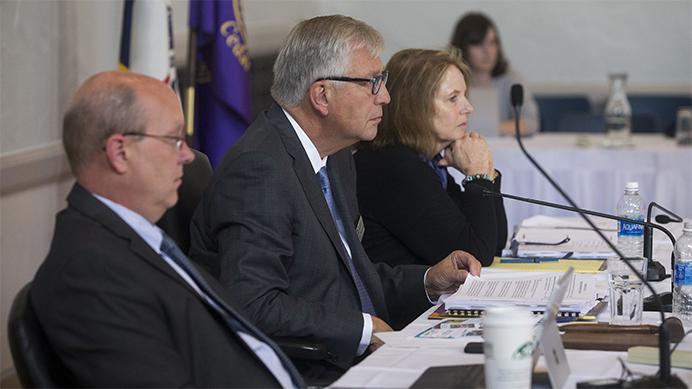A shortage of educated Iowans means higher education must be more accessible.
By Jacob Prall
My father’s bachelor’s degree promised him more opportunity than that degree offers any of us. His efforts guaranteed him a stable job and living wage, more than most universities can say for their students. Jobs requiring more than a B.A. degree are increasingly rare, leaving low-skill work positions filled by overly qualified B.A. holders or ceded to robots. This is a problem facing the nation, and Iowa is no exception.
According to the Georgetown University Center on Education, 68 percent of all jobs in Iowa will require education or training beyond what Iowans receive in high school by 2025. Among Iowans between the ages of 25 and 64, only 58.1 percent have postsecondary degrees or other credentials.
Hundreds of thousands of Iowans will need to complete an undergraduate degree to address this shortage.
The workforce crisis will leave Iowa woefully unequipped to compete in the modern economy, hurting Iowans across the state. To address the issue, former Gov. Terry Branstad created Future Ready Iowa, a partnership between business and government leaders focusing on workforce shortfalls. The program’s goal is to increase the number of Iowans with credentials beyond high-school education to at least 70 percent of adults — meaning 127,700 Iowans must earn credentials by 2025. Future Ready estimates that 41,200 of these credentials must be traditional students between 18 and 25, leaving 86,500 adults above the age of 25 needing higher-education degrees.
When these new graduates enter the workforce, new pressure and competition will be spurred in the job market. Those without degrees will lose their jobs to the overly qualified, and those with degrees will need to seek further education to have a competitive edge at a time when education has never been more expensive. Our mission, then, must be to educate and to continue educating.
It’s a considerable task, and the state has put in place measures to help increase the number of Iowans with degrees. By changing Iowa public universities’ funding models to reflect the number of native Iowans, the schools have an incentive to favor Iowa students and increase Iowa enrollment. This method has its problems — fewer out-of-state students means less diverse campuses and less tuition revenue. It also focuses on traditional students.
To encourage adults above the age of 25 to come back to school, the state must make higher education easily accessible, financially viable, and clearly beneficial. One way to achieve this is the funding and developing of long-distance learning in its universities. Further, the state has to offer incentives to businesses to encourage them to invest in the further education of their employers. There must also be an information campaign to make the value of education clear — many people believe that the cost of college isn’t worth the financial return. This is a generally incorrect assumption. The return on investment of a college degree is significant, but the upfront costs are major deterrents.
Above all else, the state must actually commit to investing in and improving its public universities. Decades of austerity, spending cuts, and corporate culture in the state Board of Regents and university administrations have left Iowa’s public universities expensive and impersonal. Interactions with the university can leave people feeling as though they’ve completed a business transaction rather than engaged in an essential institution that works to better society.
University of Iowa, Iowa State University, and University of Northern Iowa provide immense public benefit; they are some of our society’s most important public goods. Starving these institutions will not increase the number of degree-holding adults in Iowa. Fostering their missions of public service and educational attainment is key to integrating Iowa’s public community colleges and universities into everyday life.



